SingaporeMotherhood | Preschooler & Up
June 2023
9 Ways to Better Manage Childhood Myopia & Prevent Its Progression
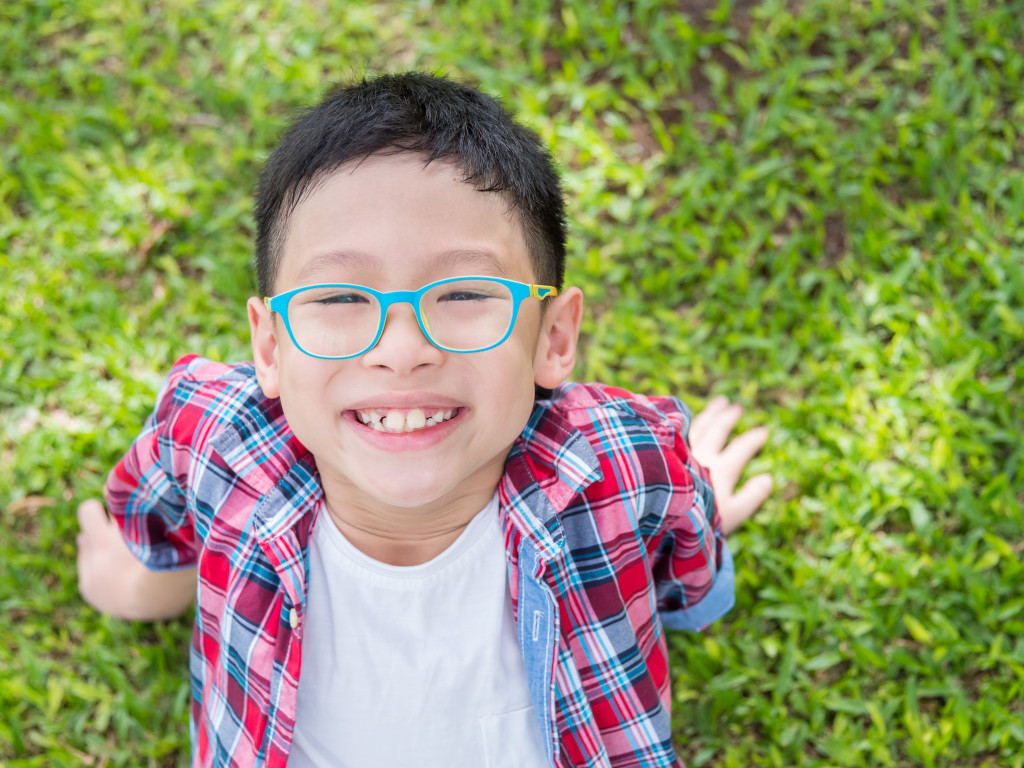
Singapore is the myopia capital of the world, with the highest rates of childhood myopia worldwide. But it doesn’t mean that it’s inevitable or that there’s nothing we can do as parents. We chat with W OPTICS optometrist Tara Chee, BSc (Hons) Optometry and Clinical Practice (UK), to find out how we can proactively help our kids correct existing myopia and slow down its progression.
According to Tara, we can even implement lifestyle changes to manage myopia. And if we start early enough, we could potentially prevent it from developing in the first place. But first of all, what is myopia?
Simply put, myopia is short-sightedness or the inability to see at a distance. It occurs when light rays entering the eye focus in front of the retina, instead of on it. This is most commonly due to an elongated eyeball. As a result of the light rays not focusing on the retina, objects appear to be blurred.
Is My Little One at Risk of Developing Myopia?
Currently in Singapore, 65 per cent of Primary Six children and 83 per cent of young adults have myopia. This is mostly due to the prevalence of digital screens in virtually every aspect of our children’s lives from leisure to education. Prolonged near activities such as staring at screens contribute to myopia onset and progression.
(See also: The Best Ways to Reduce your Child’s Myopia Risk, and Manage their Screen Time)
Researchers have found that genetics also play a role. A child who has one parent with myopia is three times more likely to develop myopia than children with no myopic parents. The risk is increased to six times more when both parents have myopia.
A rapid increase in the number of myopic adults among Singapore’s population could be a contributing factor to the high rates of childhood myopia. Even more worrying, projections indicate that by 2050, over 80 per cent of all Singaporeans adults will be myopic. Out of these, 15 to 25 per cent may develop high myopia (-5.00 or a prescription power of 500).
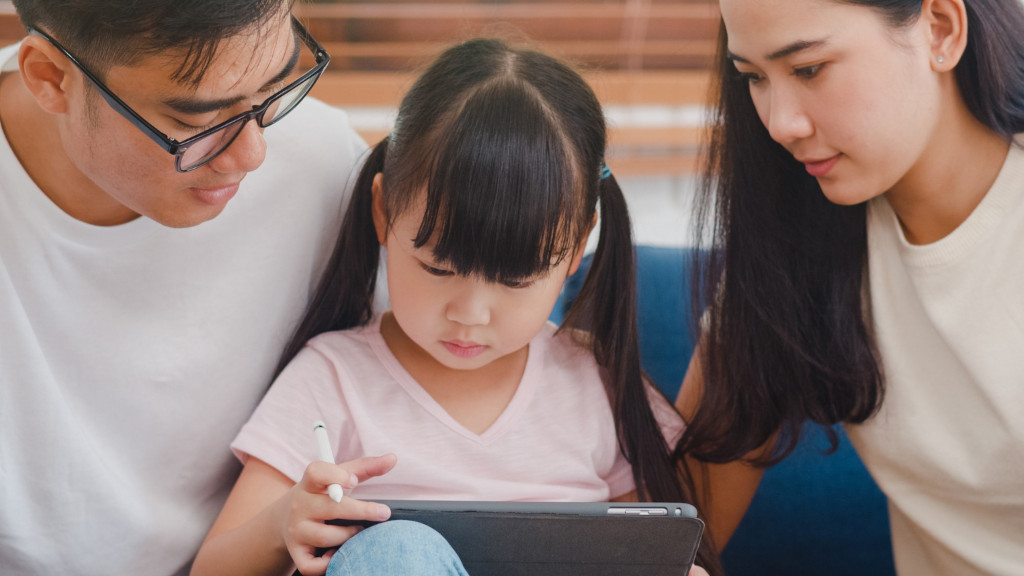
So Just Wear Glasses Now and Go for Lasik Later lor…
Scientific studies show that the younger a child becomes myopic, the faster their myopia may progress. This leads to a higher risk of high myopia and other eye complications later in life, such as posterior subcapsular cataract, retinal detachment, glaucoma, and myopic macular degeneration.
Refractive surgery, or Lasik, can correct vision so that patients can see clearly without wearing spectacles or contact lenses. However, it does not reverse the already elongated myopic eyeball. It also does not automatically prevent the condition from progressing further.
According to Ken Tong, president of the Singapore Optometric Association, there is no ‘safe’ level of myopia. Each additional dioptre (or 100 degrees) increases the risk of developing serious vision-threatening complications later in life if myopia progression is not addressed and controlled from a young age.
(See also: Childhood Myopia in Singapore: 9 Common Myths Busted!)
Thankfully, it is possible to manage myopia by slowing down its progression as early as possible. This can help reduce the lifelong risks of potential vision impairment due to the associated eye diseases. Since early onset of myopia increases the risk of developing high myopia, interventions at an early stage are critical.
Methods of Correcting Myopia
To determine the amount or the ‘degree’ of myopia your child has, explains Tara, eye care practitioners, such as optometrists like her, will first conduct an eye examination. From there, they can recommend the best options to manage it based on your child’s age and lifestyle needs. In order to combat myopia, corrective measures must be put in place to restore clear vision.
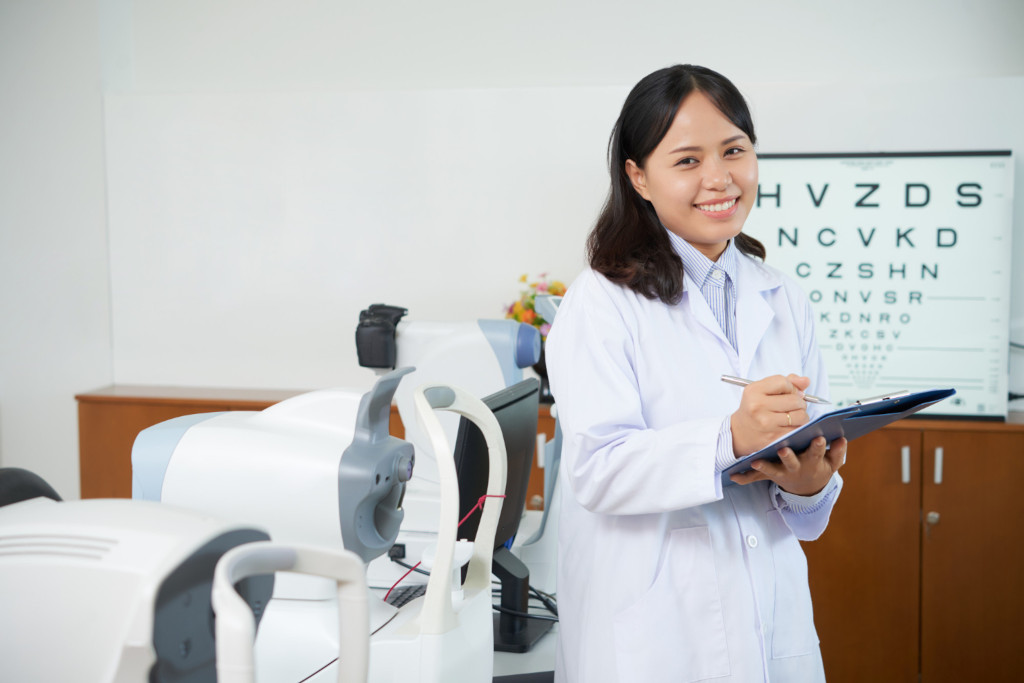
1. Conventional Spectacle Lenses
Myopia is traditionally corrected with single-vision solutions, such as standard spectacles or contact lenses. These correct myopia by ensuring that light rays entering the eye are focusing onto the retina. This will allow your child to see clearly once more.
Spectacle lenses are the most common method, as it is compatible for all ages. Well-fitted frames can be secured to your child’s face with the use of head straps or spectacle hooks. Request for frames with hypoallergenic materials and impact-resistant spectacle lenses to ensure ultimate comfort and protection for your child.
Most importantly, always choose speciality myopia management lenses designed specifically for children, instead of conventional lenses. Apart from correcting your child’s vision, myopia management lenses also help control the progression of childhood myopia. (More on this below.)
(See also: How to Choose the Right Spectacles for your Children)
2. Contact Lenses
Many parents find the idea of their child using contact lenses daunting. However, contact lens-wearing children actually show a lower risk of incurring contact lens related infections than adults! Of course, parental supervision and having regular follow-up eye checks are essential. Children aged seven years old and above are good candidates for contact lenses.
Correction and control of myopia can be done with either soft or hard contact lenses. Soft contact lenses are worn during waking hours, while hard contact lenses (more on orthokeratology lenses below) are worn overnight.
Some children, especially those with active lifestyles, may appreciate the relief from the burden of wearing spectacles throughout the day. A study found that myopic children who switched from spectacles to contact lenses showed positive improvement in their self esteem.
Slowing Down the Progression of Childhood Myopia
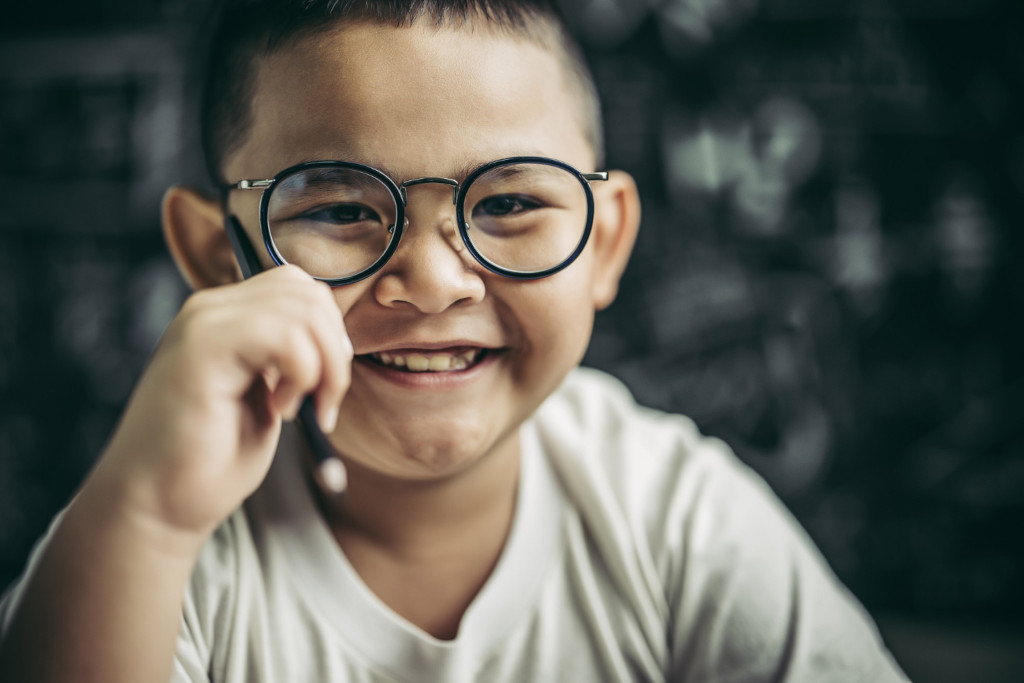
However, emphasises Tara, simple vision correction alone is insufficient. We need to take control measures to reduce the rate at which your child’s myopia worsens over time. While correcting the refractive error, managing the progression of myopia is crucial to prevent high myopia.
3. Myopia Control Spectacle Lenses
There are various speciality spectacle lenses for managing myopia on the market. One of them is Stellest®, the latest generation of myopia control spectacle lenses from Essilor® that slows down progression. It is clinically proven to reduce myopia progression by 67 per cent on average, compared to single vision lenses, when worn at least 12 hours a day.
Firstly, these spectacle lenses provide myopia correction and sharp far vision through a single vision zone. Secondly, using H.A.L.T. (Highly Aspherical Lenslet Target) technology and its constellation of 1,021 invisible aspherical lenslets that create a volume of myopic defocus signal in front of the retina, the lenses slow down the progression of myopia.
Children who’ve tried spectacles with Stellest lenses say it’s comfortable and their vision is as sharp as wearing conventional lenses. 100 per cent of them fully adapted to their new glasses within a week. And most importantly, after the first year, the eye growth of 9 out of 10 children wearing Stellest lenses was similar to, or slower than, non-myopic children.
4. Orthokeratology (Ortho-K) Contact Lenses
Ortho-K lenses have been proven to safely correct and control myopia in children by 32 to 55 per cent. It is an effective option for children who struggle with spectacles, often due to sporty lifestyles.
Ortho-K lenses are a form of hard contact lenses that your child wears overnight while they’re sleeping. The hard lens moulds the eye to create the effect of correcting the central vision and a ring of defocus in the periphery. This lets your child see clearly throughout the day without wearing spectacles or contact lenses, while benefiting from the effects of myopia control.
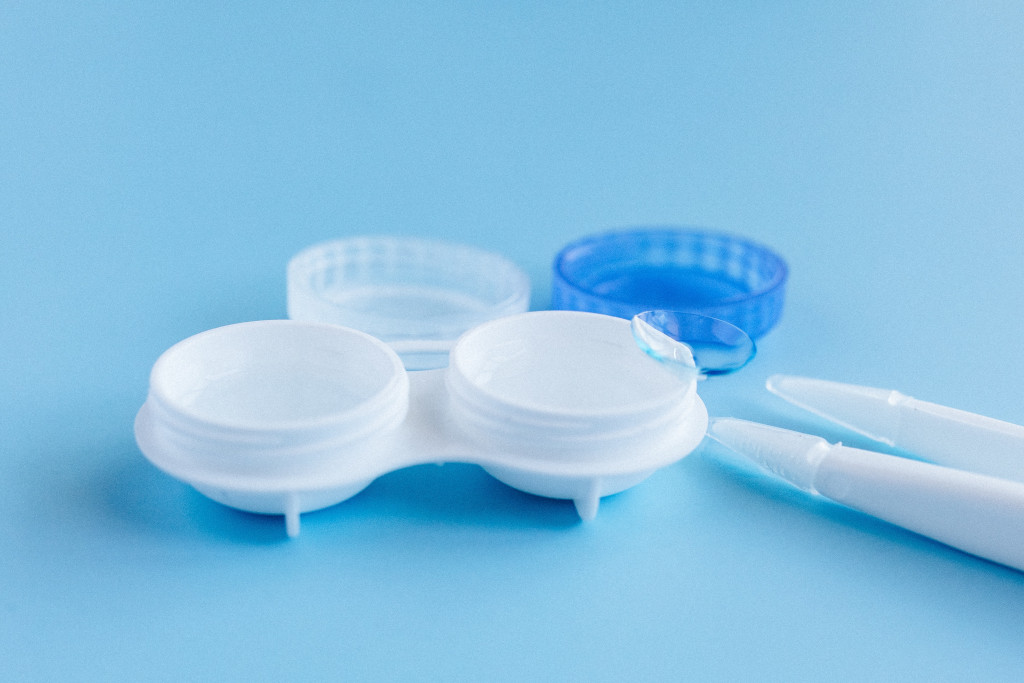
The effects of ortho-K lenses are reversible, but your child can use it indefinitely to prevent their myopia from progressing. It is generally well-tolerated by children, but may take some getting used to initially.
(See also: A Closer Look at Ortho-K Lenses for Children with Myopia)
5. Atropine Drops
Atropine eye drops have been in use in children in Singapore since 2000 to treat myopia. Ophthalmologist Dr Lee Sao Bing, medical director of Shinagawa Eye Centre, tells us more. Initially, the dosage was set at 1 per cent. Although very effective, some children had problems with glare in the sun and difficulty seeing near with their glasses on.
In the last 10 years or so, there was a shift to using a lower concentration of 0.01 per cent atropine. Over a two-year period, the reduced dose effectively slows progression by about 60 per cent with very few side effects. At five years, it proves more effective when compared to higher concentrations of atropine.
An initial check will reveal if the child is suitable for the atropine eye drop. The usual starting dose is one drop in each eye every night. According to Dr Lee, children get accustomed to it quickly as the eye drop causes no pain or irritation. The child then returns to the clinic once every few months to monitor their progress.
Holistic Lifestyle Methods to Slow Down Progression and/or Prevent Myopia in the First Place
Has your child already been diagnosed with myopia? Don’t fret. While it’s not permanently reversible, the key now is to slow down its progression by implementing healthy eye habits. And if your child still has perfect vision, advises Tara, adopt these same habits to help avoid or at least delay the onset of myopia.

6. Spend Two Hours a Day Outdoors
It may not be easy to incorporate this into your child’s lifestyle, but it’s worth the effort. Here are three reasons why:
Sunlight – Studies show that when sunlight comes in contact with the retina, it causes the release of dopamine into the eye. This contributes to preventing the eye from elongating, which is the main goal of myopia management. Besides, dopamine is a chemical the brain releases that makes you feel good, so adequate exposure to sunlight also means a happier child!
Vitamin D – The invisible UVB rays from the sun trigger the production of Vitamin D in our bodies. The ‘sunshine’ vitamin helps smooth muscle tissue around the eye’s crystalline lens to support its proper function. This muscle helps focus light on the retina and may help maintain the proper eye shape and length between the lens and the retina, which can distort as the child’s eyes develop.
Long-distance Focusing – Prolonged near activities such as reading and screen time contribute to myopia onset and progression. On the other hand, spending time outdoors encourages your child to focus on distant objects that are more than an arm’s length away, such as trees in the park and balls flying through the air while playing catch.
(See also: 13 Kid-friendly Nature Trails for Easy Hiking in Singapore)
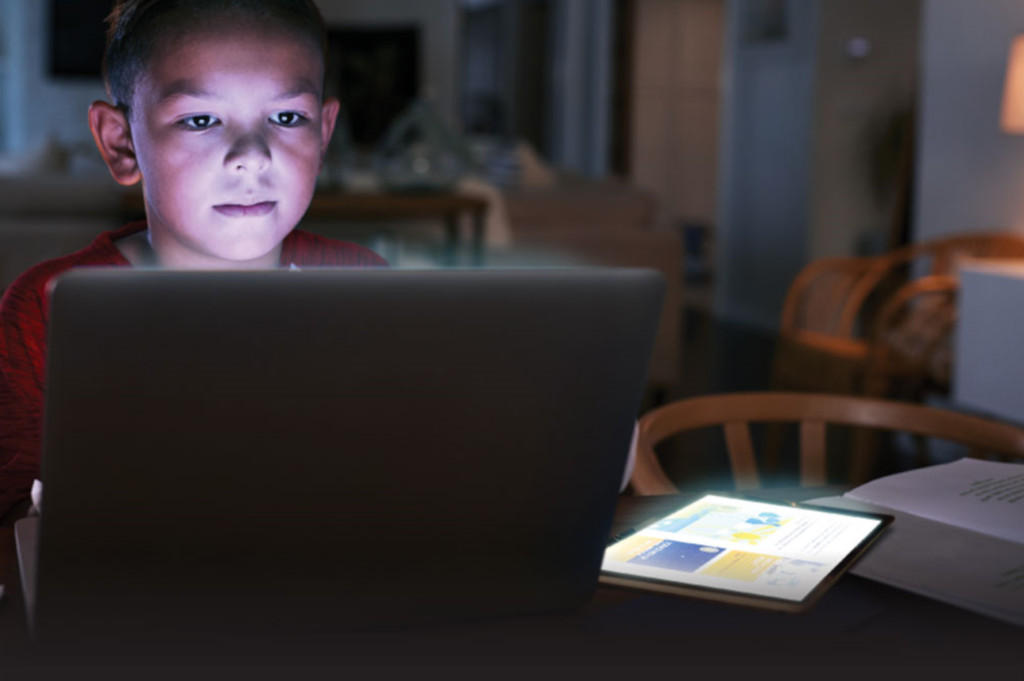
7. Reduce Screen Time
Prolonged hours of near work, such as digital device usage, is a contributing factor to the worsening of myopia. Reducing screen time may provide a protective effect against myopia progression in both children and young adults.
(See also: 5 Tips to Protect Children from Eye Strain in the Digital Age)
8. Use Anti-blue Light Monitors, Screen Protectors & Spectacles
Screens on TVs, computers, and mobile devices emit a spectrum of blue light that is harmful to the eye. Consider using anti-blue light monitors and screen protectors, which act to block them. Research shows that prolonged exposure to blue light causes damage to the cornea, crystalline lens, and retina. This may lead to sight-threatening conditions such as cataracts and age-related macular degeneration later in life.
Likewise, wearing anti-blue light spectacles can protect your child’s eyes from the harmful long-term effects of blue light rays. Moreover, there is no evidence to show that anti-blue light coatings diminish the efficacy of myopia control lenses.
If extended screen time is unavoidable, experts recommend practising the easy-to-remember 20/20/20 rule. For every 20 minutes of near work, take a break for 20 seconds, and look 20 feet (6 metres) away.
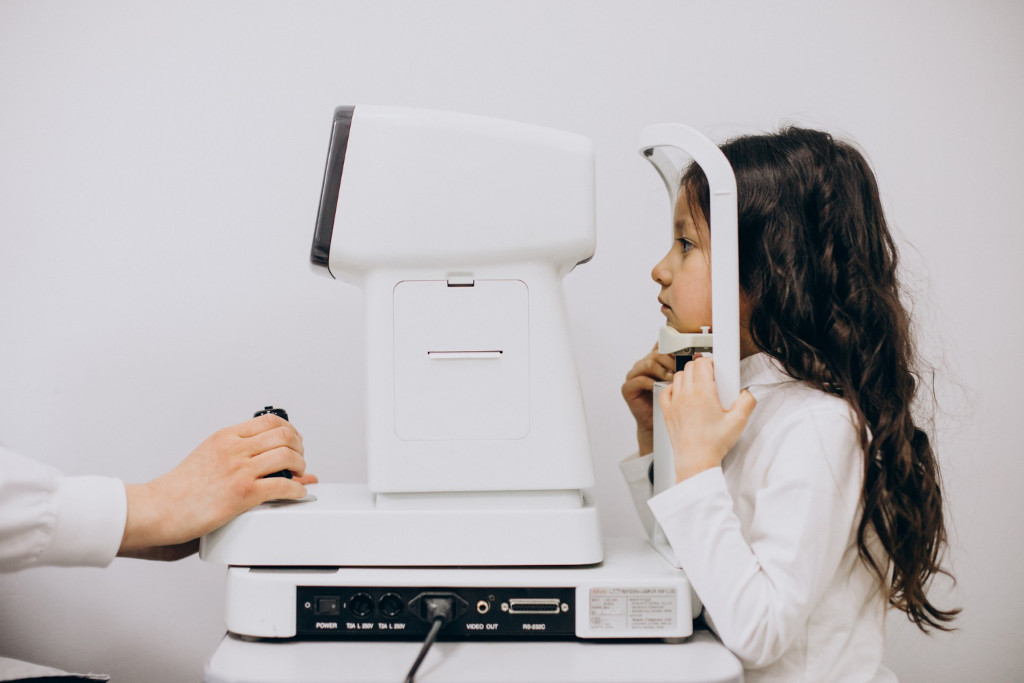
9. Go for Regular Eye Examinations
Besides practising good visual habits daily, children from 4 to 16 years of age should get a comprehensive eye examination every six months.
Children are typically diagnosed with myopia only after entering primary school, either during routine tests or because they complain of difficulty reading the whiteboard. Therefore, parents need to be extra vigilant when it comes to preschoolers. Younger children often do not notice changes in their vision, or are unable to express it well.
So how can parents tell if their little ones are developing early myopia? Tara suggests consistently monitoring for signs that suggest your child may have a vision problem. These include holding reading materials closer than usual, squinting, blinking or rubbing their eyes excessively. They may also exhibit poor concentration when reading, tilting of the head or favouring one eye over the other.
The smartest thing you can do to safeguard your child’s eye health is to bring them for regular eye examinations to detect myopia early and intervene. See you there!
All content from this article, including images, cannot be reproduced without credits or written permission from SingaporeMotherhood.
Follow us on Facebook, Instagram, and Telegram for the latest article and promotion updates.





